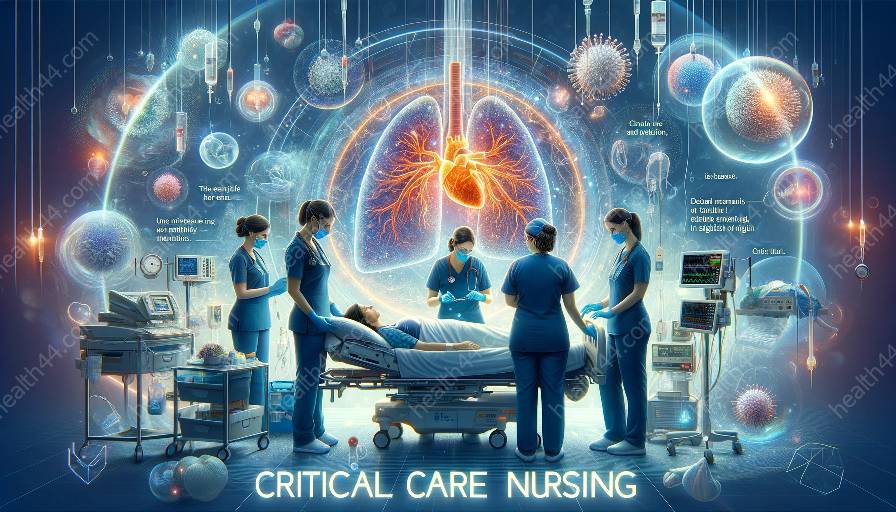Quality improvement and patient safety measures are essential aspects of critical care nursing, aiming to enhance the delivery of care and ensure positive patient outcomes. In the dynamic field of critical care nursing, it is crucial to stay abreast of the latest strategies and tools for improving the quality and safety of patient care.
Understanding Quality Improvement
Quality improvement in nursing involves systematic and continuous actions that lead to measurable improvements in patient care processes and outcomes. This includes identifying areas for improvement, developing strategies to address them, implementing changes, and evaluating the impact of these changes on patient care.
Within critical care nursing, quality improvement efforts often focus on areas such as reducing medication errors, preventing healthcare-associated infections, and enhancing care coordination to optimize patient outcomes.
Patient Safety Measures in Critical Care Nursing
Patient safety measures are designed to minimize the risk of harm to patients during their care experiences. In critical care nursing, patient safety measures include protocols and practices aimed at preventing adverse events, errors, and complications that can compromise patient well-being.
These measures encompass a wide range of interventions, such as implementing evidence-based protocols for ventilator management, ensuring proper infection control practices, and promoting effective communication among multidisciplinary care teams to prevent misunderstandings that could impact patient safety.
Implementing Evidence-Based Practices
One of the cornerstone approaches to enhancing quality and safety in critical care nursing is the use of evidence-based practices. Evidence-based practice involves integrating the best available research evidence with clinical expertise and patient preferences to make informed care decisions.
Nurses in critical care settings must stay updated on the latest evidence-based guidelines and recommendations in areas such as pain management, sedation protocols, and mobility initiatives to ensure that patient care practices align with current best practices and research findings.
Role of Technology in Quality Improvement and Patient Safety
Technology plays a significant role in supporting quality improvement and patient safety in critical care nursing. Electronic health records (EHRs), clinical decision support systems, and medication management software help streamline care processes, reduce errors, and provide healthcare professionals with critical information at the point of care.
In addition to these electronic tools, advancements in monitoring and diagnostic technologies enable critical care nurses to continuously assess patient conditions and respond promptly to changes, contributing to enhanced patient safety and improved care outcomes.
Continuous Education and Professional Development
Continuous education and professional development are vital for critical care nurses to stay proficient in quality improvement and patient safety measures. Continuing education programs, specialized certifications, and participation in professional organizations offer opportunities for nurses to expand their knowledge and skills in this critical area.
Furthermore, ongoing professional development enables critical care nurses to stay informed about emerging trends, regulatory changes, and innovative practices that can be leveraged to advance the quality and safety of care delivery.
Collaborative Approach to Care
Critical care nursing often involves a multidisciplinary approach to patient care, emphasizing the importance of collaboration among healthcare professionals. Effective communication, interdisciplinary rounds, and team-based care models are essential components of a collaborative approach that promotes quality improvement and patient safety.
By working together with physicians, pharmacists, respiratory therapists, and other team members, critical care nurses can collectively identify opportunities for improvement, implement standardized protocols, and coordinate care efforts to ensure that patients receive safe, high-quality care.
Evaluating and Monitoring Performance
Evaluating and monitoring performance is integral to quality improvement and patient safety in critical care nursing. By establishing robust performance metrics, collecting data, and regularly reviewing outcomes, healthcare teams can identify areas of success and areas in need of improvement, allowing for targeted interventions to enhance care quality and safety.
Furthermore, monitoring performance trends over time enables critical care nurses to track the impact of quality improvement initiatives and patient safety measures, guiding the refinement of care practices and the development of new strategies to address evolving challenges.
Conclusion
In conclusion, quality improvement and patient safety measures are fundamental components of critical care nursing, shaping the delivery of care and influencing patient outcomes. By embracing evidence-based practices, leveraging technology, pursuing continuous education, fostering interdisciplinary collaboration, and diligently monitoring performance, critical care nurses can drive positive changes in care delivery, ultimately enhancing the quality and safety of patient care in critical care settings.


